Next time you are navigating in the Singapore Strait, just imagine if there was no traffic Separation scheme in that area.
Or imagine crossing the Dover Strait without the presence of any Traffic separation zone.
It would be chaos.
The increase in accidents would be many folds.
And you would say Hell no, it is so difficult to navigate with TSS in these areas, leave alone navigating without TSS.
I could not agree more.
There are 205 plus Traffic Separation Schemes adopted by the IMO which suggests that even if you have been sailing for only a couple of years, you would still have been in a TSS.
But if you have not then let me clear the air right away.
The purple zones and line that you see for TSS are only the imaginary lines drawn on the chart and you won’t find these marked on the sea water as your chief officer might have asked you to look for.
TSS makes the navigation a little easier but that also brings complacency that leads to seafarers making simple mistakes while using TSS.
Don’t trust me? Then hear this.
In 2017 alone, there have been a number of major collisions in the TSS. One of those was the infamous collision between MSC Alexandra and the Dream II in Singapore Strait.
Worried by the number of accidents in Singapore Strait, MPA Singapore even released a video on the Safe passage in the Singapore Strait.
So the question is how to avoid all these troubles when navigating in TSS? By avoiding simple mistakes that we might be making in the TSS, I would say.
In this post, we will discuss 8 of these simple mistakes that seafarers make while using TSS.
1. Joining and leaving a TSS
If we have to use a Traffic Separation Scheme, the first thing we have to do is to join that TSS.
But there are few mistakes that seafarers make while joining a TSS.
As per Rule 10 of the Colregs
normally join or leave a traffic lane at the termination of the lane, but when joining or leaving from either side shall do so at as small an angle to the general direction of traffic flow as practicable
What does this mean?
This means that we must join the TSS at or before the point where it starts.
I know you know that. But the mistake I will be pointing out is not that but this.
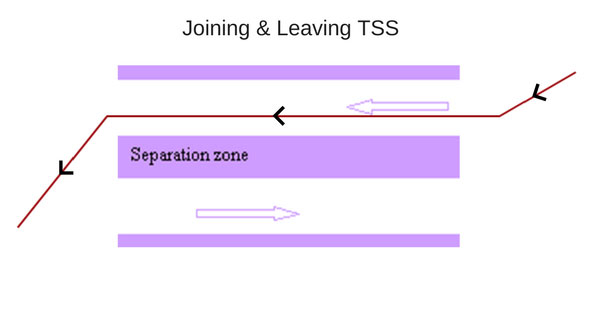 Do you see any issue with this course in and around TSS?
Do you see any issue with this course in and around TSS?
The ship has planned to enter and leave the TSS at the termination of the TSS as required by rule no 10. Everything looks OK but there is one issue with this course.
The issue is that the ship has planned the to exit the TSS at a course that would trouble the ships about to join the TSS.
The solution to this issue is…
Do not plan to alter the course towards the traffic planning to join the TSS. We can plan to continue to move on our course for a couple of miles and then alter the course.
In fact, this is exactly what rule 10(f) emphasizes on.
2. Crossing the TSS
I earlier said that TSS makes it so easy to navigate in congested waters. But that is not true if you need to cross a TSS.
Don’t trust me then try crossing the TSS to pick up the pilot at Singapore.
The part of the TSS where there is expected crossing traffic is marked by a precautionary area.
Consider that your ship is arriving from the west and need to pick up the pilot at “Western pilot boarding A”. You need to cross the TSS to pick up the pilot.
Now the mistake I see many seafarers do is to plan the crossing this TSS like this.
This course may have the advantage of easily arriving at the pilot station with heading 090 (parallel to the breakwater).
But we must understand that we cannot cross the TSS at this angle.
As per the Rule 10,
A vessel shall, so far as practicable, avoid crossing traffic lanes but if obliged to do so shall cross on a heading as nearly as practicable at right angles to the general direction of traffic flow
3. Using a wrong TSS
I know a couple of instances where the port authorities fined the seafarers and the company for using a wrong TSS.
What do I mean by the wrong TSS?
At few places, you will find two Traffic separation schemes at the same place. That is two TSS in an upward direction and two in the downward direction.
Which TSS do we need to follow?
We just need to check the information on the chart and/or sailing directions for that area. This will have the information about each of these TSS.
The information could be something like this.
So if the ship is carrying dangerous cargo in bulk, the ship must use the lane C if southbound and lane D if northbound.
But I must be a silly person if I think that seafarers just follow the lane as per their choice.
Then why do they make this mistake?
While sometimes it may be just because of negligence, other times there may be other reasons.
The reasons like following the previously used passage plan. When the last time this TSS was used, the vessel may be loaded with dangerous cargo in bulk.
The next time, the vessel may not have dangerous cargo in bulk. But as the previous passage plan was used, vessel followed the wrong lane.
But whatever the reason, it cannot be an excuse for using the wrong lane.
4. Missing Mandatory reporting
Using some of the TSS require the ships to do certain reporting. For some, the reporting is required just before joining a lane and on the VHF.
For others, it may be required a couple of days before entry into the TSS and through the email.
For example, using Dover Strait require all the vessel over 300 GRT to do mandatory reporting.
Singapore and Malacca Strait is another TSS that have the mandatory reporting requirements.
There are tons of resources seafarers can refer while planning the passage that requires using TSS.
For Dover Strait, there is BA chart 5052.
For Malacca Strait, there are a couple of resources that seafarer must refer. Resources like
- Admiralty Charts, 5502-Mariners’ Routeing Guide Malacca & Singapore Straits
- Passage Planning Guide – Malacca and Singapore Straits (by Witherby Publishing Group)
And then there is this brief guide by BIMCO for safe transit through the Strait of Malacca and Singapore.
It is unfortunate that there have been many cases where this mandatory reporting is either missed out or VHF volume is too low to hear the calls made by the VTS monitoring the TSS.
5. Not acting Proactively in TSS
If you ask me to name one quality that seafarers should develop in themselves, I would choose proactiveness with all the force I can.
While a navigator needs to be proactive in every aspect of navigation, navigating in TSS is particularly the area where this trait is very useful.
Let us see it with examples.
Do you see anything wrong with this courses in the Singapore TSS?
While there is nothing wrong with the course per se but I know the OOW (or master) of this vessel may have a tough time crossing this area.
How do I know?
There would be a lot of traffic leaving the anchorage area and joining the opposite traffic lane.
With this course, we are creating a situation where some of this traffic might be crossing our bow.
This would be apart from the usual traffic that will be crossing the TSS for picking up the pilot.
A similar case is when you have to cross the Singapore TSS for picking up the pilot. If you plan your course like this, you are inviting troubles in crossing the TSS.
Why?
Because you will find it hard to alter your course to cross the TSS because of usual traffic in the TSS.
Then, what if we plan our course like this?
Surely, we are avoiding a lot of cross traffic this way.
All I am trying to say is that we need to be proactive in planning our passage in the TSS.
6. Not keeping the vessel TSS ready
Your company’s SMS manuals may or may not specifically mention this. But there are certain rules in navigating a vessel in the TSS, especially a congested TSS areas.
These rules are
- Keeping an extra A/E (generator) running, and
- Proceeding at a safe speed
Why? Let me explain.
Keeping an extra A/E (generator) running
When the ship is navigating in the TSS, there are a hell lot of vessels around own vessel at a comparatively shorter distance.
I agree that most of these vessels are on a parallel course to the own vessel.
But should anything goes wrong with any one vessel, we may be in need to alter our course quickly. This may require us to use the rudder hard over.
If the extra A/E is not running, the vessel may experience black out just when it requires the power most.
Proceeding at a safe speed
Sudden alteration of course may be required in the TSS but sometimes that is not the most effective action in the TSS. This may be because of dense traffic around, the width of the TSS or wrecks and other dangers around.
This will be the time when reducing (and sometimes increasing) the speed may be the most effective action.
But what if you are proceeding at the sea speed and need to give notice to the engine room (say 30 minutes notice) for reducing the speed?
In the open sea, alteration of course may be the best way to avoid the collision. But in TSS, it may sometimes be the reduction in speed.
Proceeding at full sea speed in the TSS will not be the safe speed.
7. Misunderstanding the Rule no 10
I hear a lot of questions on TSS situations. Questions like
- A vessel crossing own vessel from starboard (or port) side in TSS with the risk of collision. Who is give way vessel and what action we need to take?
- A fishing vessel crossing own vessel in TSS. Who is give way vessel?
- A NUC vessel overtaking own vessel in TSS. Who is the give way vessel?
And hundreds of similar situations. Sometimes we fail to gather that all these situations can be covered under a single answer.
And the answer to all these questions is…
a traffic separation lane does not give any right of way to any vessel over any other vessels
This means that you should treat all TSS situations as if the same situation was in the open sea.
So action in case of crossing situation in TSS will be same as a crossing situation outside TSS.
Similarly, the action for the overtaking situation in TSS will be same as any overtaking situation outside TSS.
I might sound a bit repetitive here but I would still say it again.
a traffic separation lane does not give any right of way to any vessel over any other vessels
8. Not following general traffic flow
Again, this is the mistake I see too often. We plan the passage in the TSS that is not following the general traffic flow.
Want to know what I am talking about here?
We all know why this is done purposely.
To avoid one extra line or course.
But we must understand that this is wrong and not as per rule 10 which states that
A vessel using a traffic separation scheme shall proceed in the appropriate traffic lane in the general direction of traffic flow for that lane
It may take us a couple of more lines to draw, but ideally, we must bend our courses parallel to the TSS.
Like this, for Strait of Hormuz.
Conclusion
I said it in the beginning and I would say it again. TSS makes the navigation much easier.
But that is only if we use the TSS in a way that not only avoids troubles to us but to other vessels in the TSS too.
We have discussed the 8 simple mistakes that navigator make while using TSS.
Avoiding these mistakes can save much of these troubles in the TSS.
Share this:

About Capt Rajeev Jassal
Capt. Rajeev Jassal has sailed for over 24 years mainly on crude oil, product and chemical tankers. He holds MBA in shipping & Logistics degree from London. He has done extensive research on quantitatively measuring Safety culture onboard and safety climate ashore which he believes is the most important element for safer shipping.
Search Blog
14 Comments


Useful explanation.I will use these technique next time.Thank you captain

Thanks Rajesh... let me know if these helped during actua use onboard...

Hi Sir, is the precautionary area part of TSS? do we have to comply with rule 10? As far as what I have found out Precationary area, two-way route and deepwater routes arent considered TSS. and also rule 10 applies to only IMO approved TSS. Please enlighten me. Thank you.

Hello sir ... As you said we should take action in TSS considering the action which we will take outside TSS as the rule does not give any right of way.. But as per rule 10(i) and 10(j) vsl less than 20 metres in length , sailing vessel and fishing vessel should keep clear of a power driven vessel following a traffic lane, no matter the target is on which side . ??

its says shall not impede the passage or safe passage , which is different from keep clear, so responsibility still exist on PDV in ROC as per rule 18

Thank u Sirr.....so useful for me...as well as others.....once again a lot of thanks!!!

Ayay capt! Many thanks for explanation! Wish me luck for my next contract as a 2nd Officer!

Hello sir i have an question , how to recover a person falling overboard in a TSS?

You can deviate from COLREGS for the purpose of saving a Life. Transmit PAN PAN PAN. If you are in the process of recovery then you can put up RAM and complete the recovery. Ofcourse carrying out a search (pattern) will be increasingly difficult with surface vessels. You will need shore assistance for deployment of rescue helicopters. I have witnessed search patterns and Navtex warning for man over board in English channel.

Captain Jassal Good job Summarizing these points. It might be useful for the bridge team on a vessel calling busy TSS areas to discuss these points in a bridge team meeting prior the transit.

What will be better course in first diagram to minimise crossing traffic from bow when westbound? You have nicely given better course to follow in later diagram to avoid crossing traffic when eastbound proceeding for pilot station

Very nicely explained with example charts. Thank you sir,
Leave Comment
More things to do on myseatime

MySeaTime Blogs
Learn the difficult concepts of sailing described in a easy and story-telling way. These detailed and well researched articles provides value reading for all ranks.

Seafarers Question Answers
Ask or answer a question on this forum. Knowledge dies if it remains in our head. Share your knowledge by writing answers to the question

MySeaTime Podcast
This podcast on the maritime matters will provide value to the listeners. Short, crisp and full of value. Stay tuned for this section.

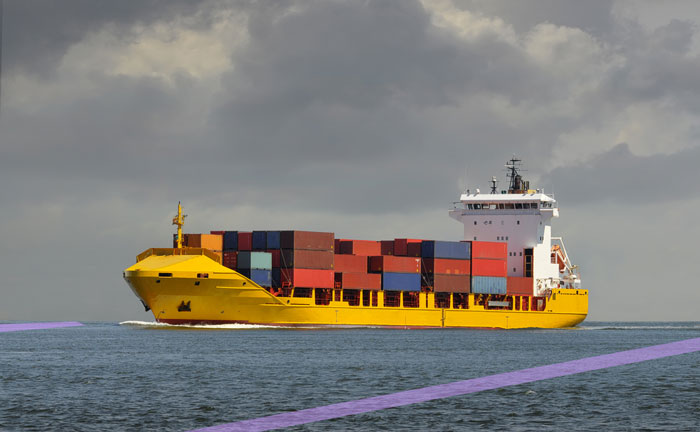
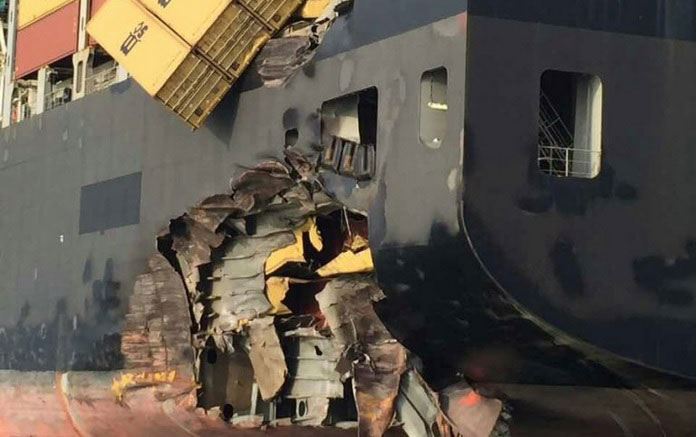
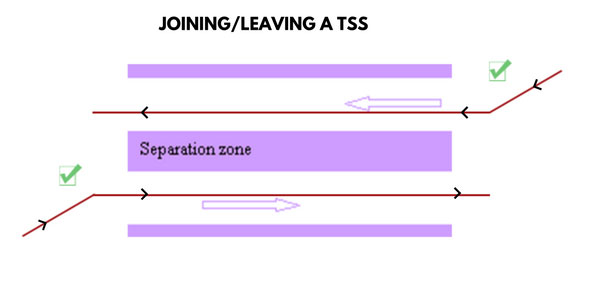

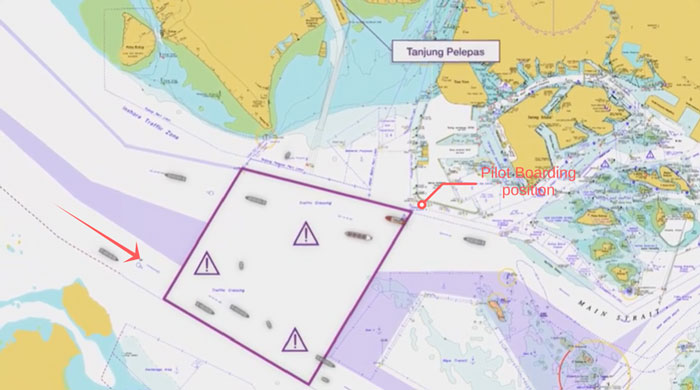
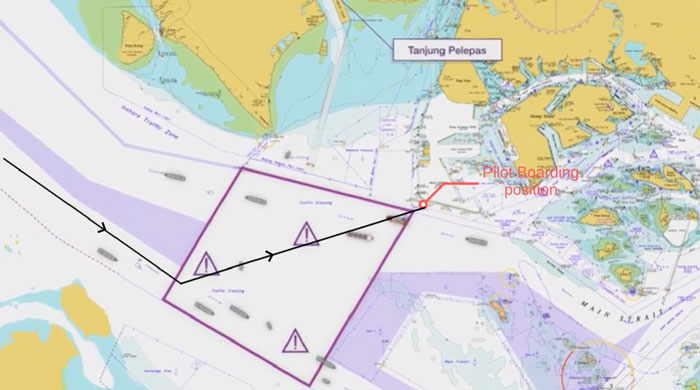
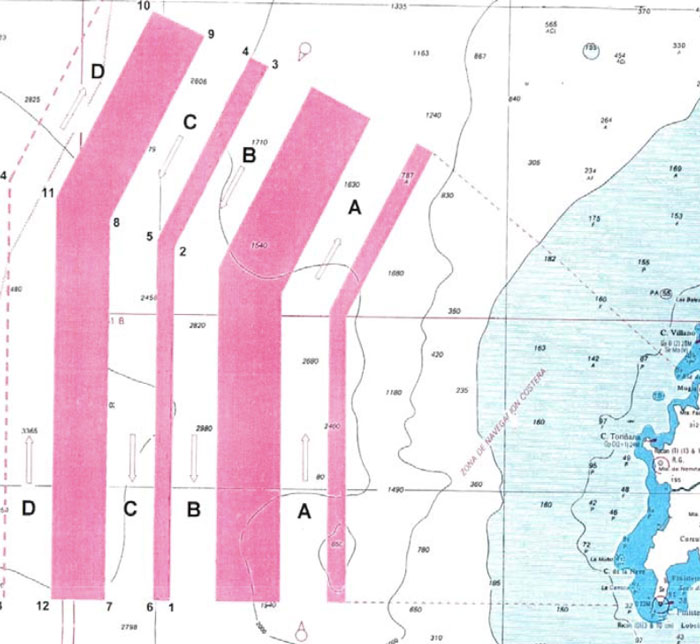
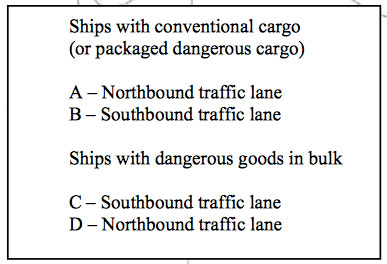
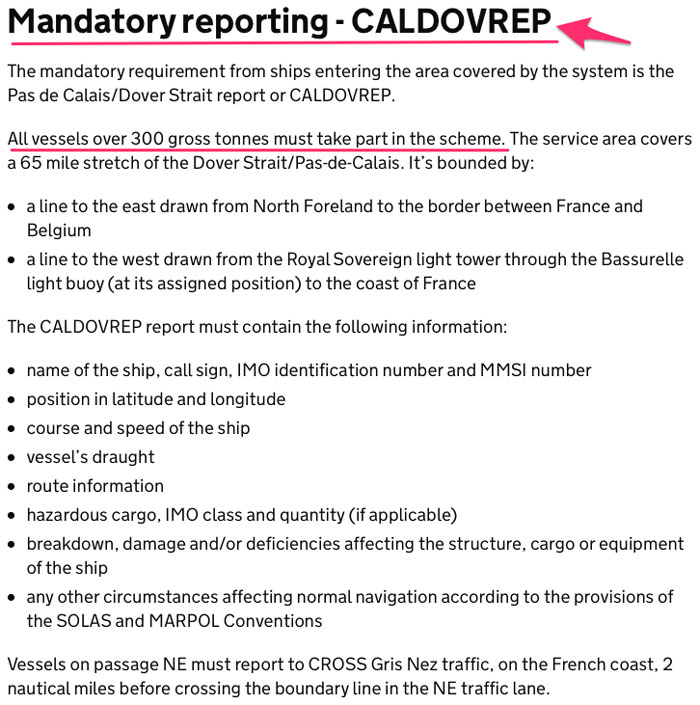
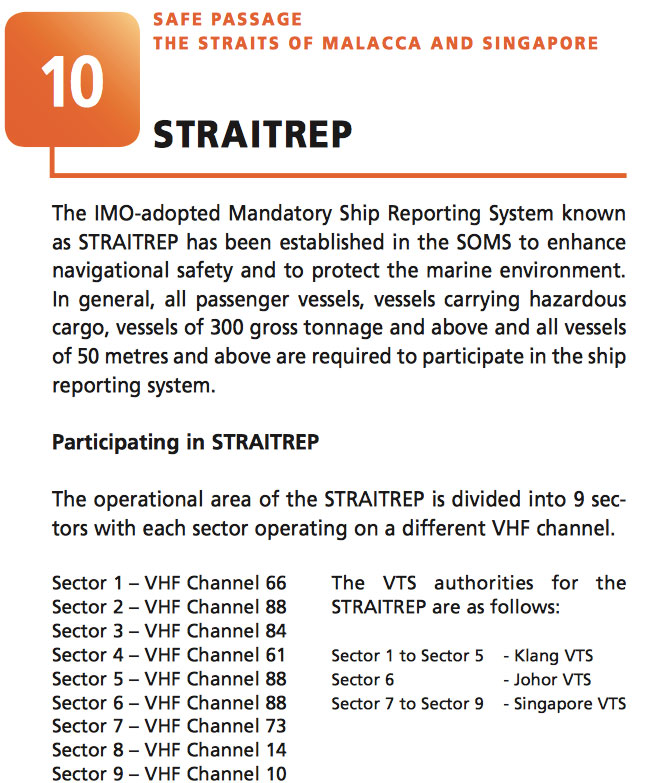
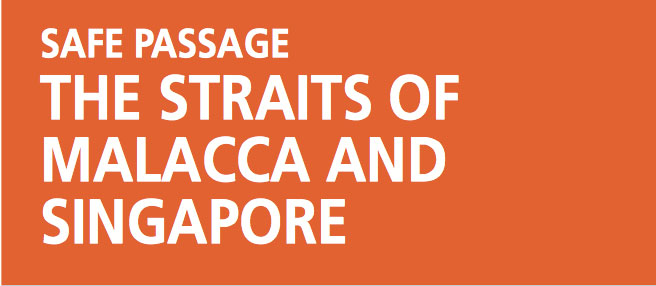
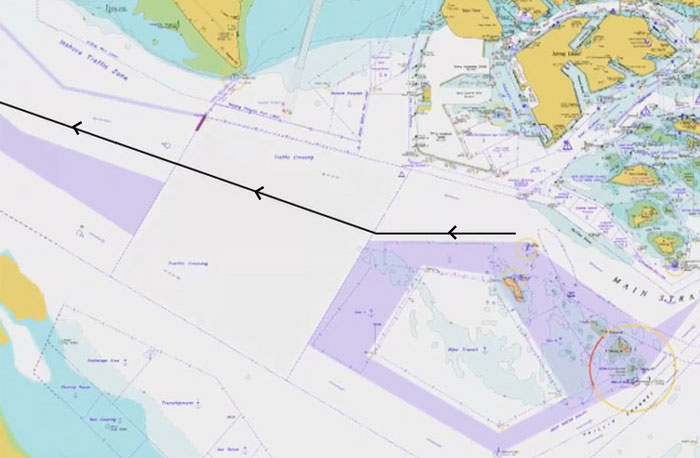
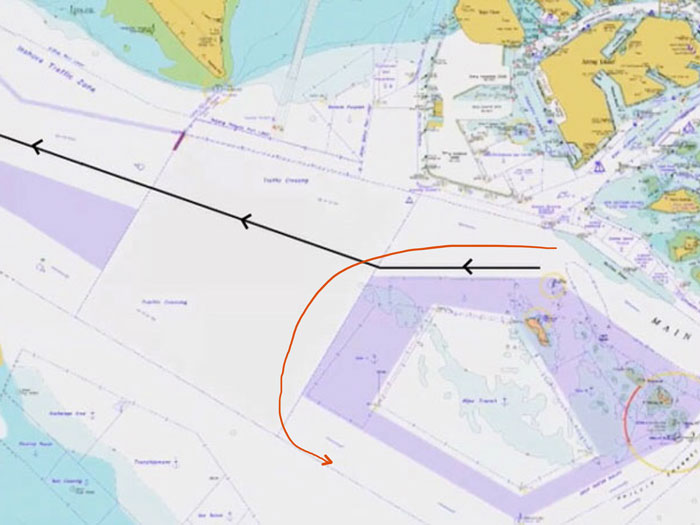
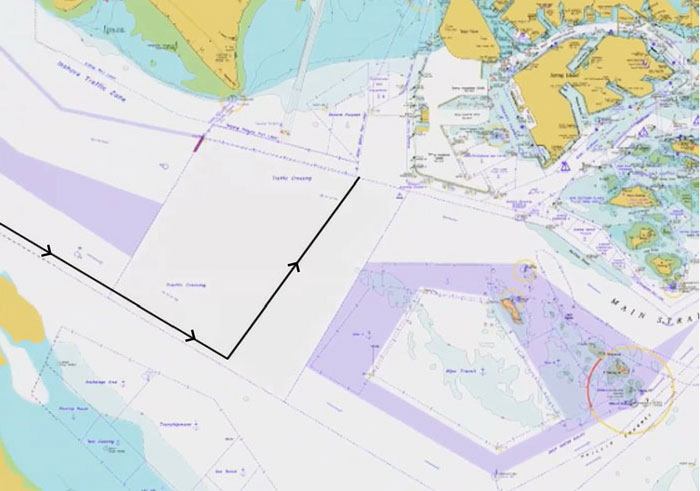
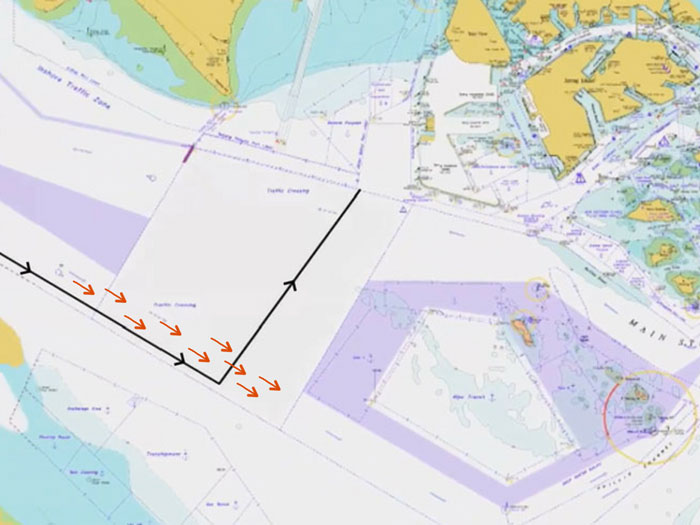
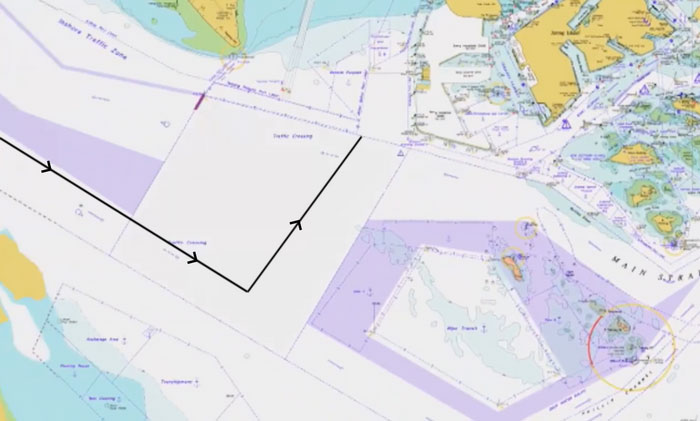
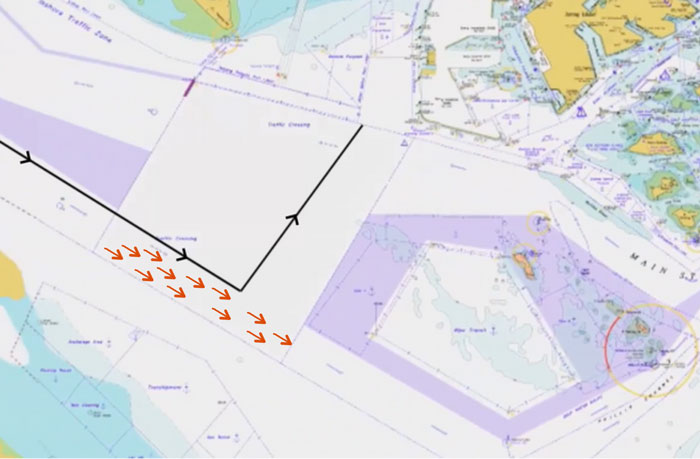

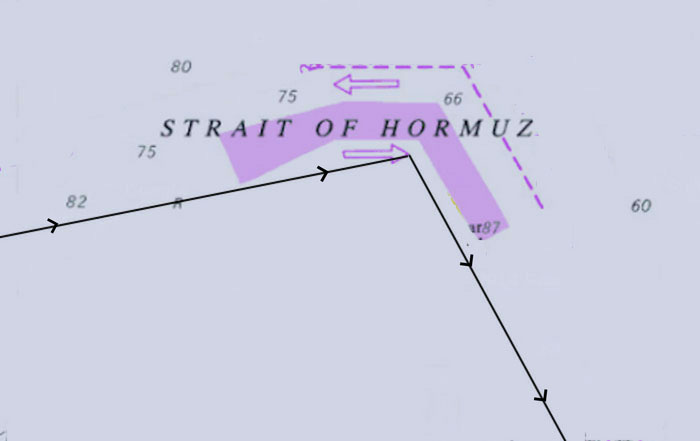

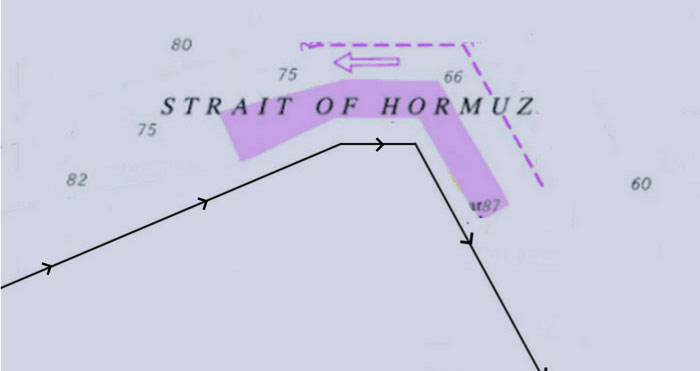
VERY WELL EXPLAINED CAPT.JASSAL
Thank you, Capt Pereira...